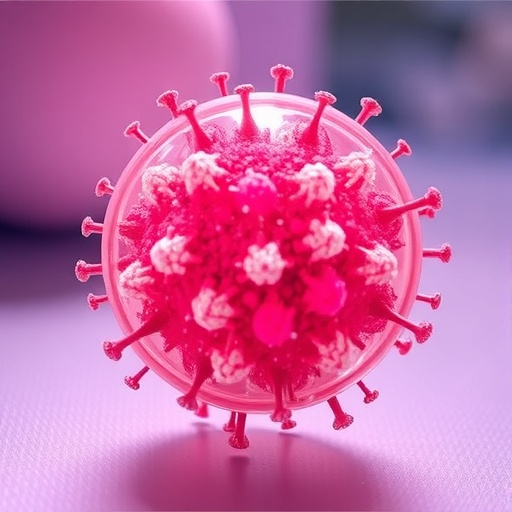In a groundbreaking study published in Environmental Monitoring and Assessment, researchers have delved into the complex world of micro- and nano-polyethylene terephthalate (PET) particles, unveiling innovative laboratory protocols for their preparation. The research, led by Kameníková, Hrušková, Udrea, and their colleagues, explores both bottom-up chemical approaches and top-down physical methods. This work does not just push the boundaries of material science—it also carries significant implications for environmental studies, making it a crucial focal point for scientists and policymakers alike.
Micro- and nano-sized particles have become a hot topic in the field of environmental science due to their increasing prevalence and potential risks to both ecosystems and human health. The study meticulously investigates the preparation techniques for these particles, addressing the gaps in current methodologies. As microplastics continue to accumulate in environments worldwide, understanding their formation and behavior is essential to mitigate their impact. With the rise of plastic pollution, this research exemplifies a timely response to a pressing global issue.
The first section of the study dives into bottom-up chemical methods. These approaches involve synthesizing micro- and nano-PET particles from smaller molecular building blocks through various chemical reactions. The authors emphasize the significance of controlling parameters such as temperature, reaction time, and the concentration of reactants in producing uniform particle sizes. This meticulous control can result in particles with targeted properties, enhancing their utility in various applications, from industry to research.
Transitioning to the top-down physical methods, the researchers highlight techniques where larger PET materials are broken down into smaller particles. Mechanical grinding, for instance, is one technique discussed, where bulk PET is subjected to physical forces to achieve the desired particle size. This method, while straightforward, comes with its own set of challenges regarding the uniformity and purity of the resulting particles. The research outlines approaches to overcome these challenges, which could lead to better replication of results across different laboratory settings.
From a practical standpoint, the study not only emphasizes the methodologies but also addresses the environmental implications these micro- and nano-PET particles may have. As these particles enter aquatic systems, their interactions with biological organisms become crucial. Understanding their behavior—how they aggregate, what toxins they may leach, and how they are absorbed by living organisms—can inform risk assessments and help create guidelines to protect biodiversity.
Additionally, the researchers pose vital questions regarding the fate of these particles in the environment. Once micro- and nano-PET particles are released, what happens to them? Are they biodegradable, or do they persist indefinitely? The study provides a framework for investigating these pressing issues, encouraging further research into the long-term impacts of microplastics in various ecosystems.
In terms of analytical techniques, the study also does not shy away from detailing the characterization methods used to evaluate the resultant micro- and nano-PET particles. Methods such as scanning electron microscopy (SEM) and transmission electron microscopy (TEM) are crucial for visualizing particle morphology. Furthermore, techniques like dynamic light scattering (DLS) allow for the measurement of particle size distribution, a fundamental aspect of understanding their behavior in the environment.
The research findings are positioned within a larger context, connecting with ongoing debates in plastic pollution and environmental sustainability. As institutions and governments grapple with how to address the plastic crisis, studies like this one provide invaluable insight. They not only advance scientific knowledge but also pave the way for developing more effective policies aimed at reducing plastic waste and its associated risks.
The study also serves as a call to action for the scientific community. With sophisticated methodologies available for particle preparation, the authors advocate for standardization across laboratories to ensure reproducibility of results. This is particularly essential for comparative studies that seek to understand the environmental fate of micro- and nano-PET particles on a global scale.
In conclusion, the thorough exploration of laboratory protocols for preparing micro- and nano-PET particles marks a significant contribution to environmental science. By combining innovative chemical and physical methods, the researchers have set a foundation for future studies that can better inform both scientific communities and policymakers. The insights gleaned from this work carry the potential to positively influence environmental sustainability efforts, urging a global rethink of plastic use and waste management.
As society strives towards a more sustainable future, understanding the intricacies of microplastic pollution remains crucial. By fostering collaborations among researchers, industries, and policymakers, we can create a comprehensive approach that addresses the multi-faceted challenges posed by plastic pollution.
In essence, Kameníková et al. have opened the door for further critical inquiry into micro- and nano-PET particles, laying the groundwork for future advancements in both material science and environmental protection. As we look ahead, it is these innovations that will help us bridge gaps in knowledge and develop solutions to one of the most pressing environmental issues of our time.
Subject of Research: Preparation and environmental implications of micro- and nano-PET particles.
Article Title: Testing laboratory protocols for micro- and nano-PET particles preparation by bottom-up chemical and top-down physical methods and implications for environmental studies.
Article References:
Kameníková, E., Hrušková, A., Udrea, C. et al. Testing laboratory protocols for micro- and nano-PET particles preparation by bottom-up chemical and top-down physical methods and implications for environmental studies.
Environ Monit Assess 197, 1120 (2025). https://doi.org/10.1007/s10661-025-14582-6
Image Credits: AI Generated
DOI:
Keywords: Microplastics, PET particles, Environmental impact, Material science, Laboratory protocols.




